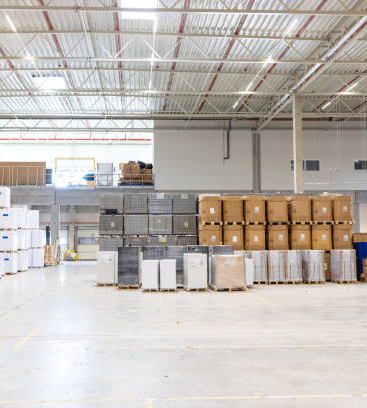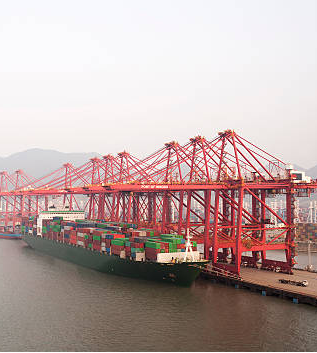
G-Billion Logisticsでは、迅速な国際配送は単にスピードだけでなく、信頼性と顧客サービスも重要であることを理解しています。 だからこそ、私たちは国際エクスプレスサービスの迅速な配送と地元のプロバイダーの個人的なタッチを組み合わせたさまざまなサービスを提供しています。 私たちの専門チームは、貨物のサイズや複雑さに関わらず、スムーズで成功した出荷を確実にするために必要なサポートとガイダンスを提供するためにここにいます。 私たちの国際エクスプレスサービスを利用すれば、あなたの貨物が時間通りに完璧な状態で目的地に到着することを確信できます。

私たちは、世界中への迅速な配送が配送の成功にとって重要であることを理解しています。私たちの熟練した専門家のグループは、サービス提供の優秀さと、商品が目的地に無事に到着するまでの安全性を確保することにしっかりと取り組んでいます。また、毎回適切な時間に配送することも行っています。私たちは、国際エクスプレスサービスに関する多様なニーズに応える能力があり、すべてに対応する幅広い選択肢を提供しています。
時間通りで便利かつ信頼性があるために、私たちのドアツードア配送は比類がなく、信頼性を重視しています。

国際的なつながりに依存するビジネスを運営することは、ストレスが多く、時間がかかることがあります。だからこそ、G-Billion Logisticsでは、迅速なサービスを提供することを使命としています。私たちの専門チームは、あなたの貨物がA地点からB地点へ問題なく届くように尽力しています。私たちはあなたが心配しなくて済むように、懸命に働いています - あなたが人生の他の重要なことに集中できるように。私たちの国際エクスプレスサービスを利用すれば、遅延配達や損傷した商品について心配する必要はもうありません!

エクスプレス宅配サービスの世界的リーダーとして、G-BILLIONはその信頼性と効率性で注目されています。私たちの国際エクスプレスサービスは、書類や荷物を国境を越えて迅速かつ安全に届ける必要がある企業向けに設計されています。G-BILLIONなら、あなたの貨物が最高レベルのケアをもって確実に時間通りに届けられることをお約束します。G-BILLIONがあなたの物流を効率化し、あなたのビジネスが競争に勝ち続けることをお手伝いします。

もし貴社が重要な書類の迅速で安全な配達を必要とする場合、G-BILLIONの国際エクスプレスサービスが最適な解決策です。私たちは、時間に敏感な書類を世界中に送る必要のある企業向けに、速くて信頼性の高い宅配サービスを提供します。私たちの正確さと安全性への取り組みにより、あなたの書類は確実に安全かつ予定通りに届けられます。G-BILLIONなら、国際輸送に関する貴社のニーズは確実な手に委ねられます。

SHENZHEN G-Billion Logistics LTD.(「GBL」と称する)は、2023年に深センで設立された総合的なクロスボーダー輸出サプライチェーンサービスプラットフォームです。自社開発の物流、金融、リスク管理、OA協力機能を統合した深くデジタル化されたシステムを備え、GBLは質の高い航空輸送、成熟した派遣リソース、そして多様な製品カテゴリを持っています。
GBLは「中国最高のクロスボーダー輸出サプライチェーンサービスプラットフォームの構築」を位置付け、IT技術とデジタル化をコアドライバーとして活用しています。4+1モデルを構築し、クロスボーダーロジスティクス、クロスボーダーアイコマース、海外クラウド倉庫、サプライチェーンファイナンスという四大事業セクターに加え、完全にデジタル化されたプラットフォームを提供し、中国製造業の国際展開を支援することに焦点を当てています。
私たちは信頼性が高くコスト効果のある物流ソリューションを提供できるグローバルなパートナーやエージェントのネットワークを持っています。航空、海上、陸上、または複合輸送が必要であっても、私たちがお手伝いします。
私たちはカスタマイズ可能で柔軟なサービスを提供できる専門家のプロフェッショナルチームを持っています。在庫管理、倉庫運用、配送、通関など、特定のニーズに合わせた物流計画の設計と実行をサポートします。
私たちはサプライチェーンの可視化とコントロールを強化する最先端のテクノロジープラットフォームを持っています。出荷状況をリアルタイムで追跡し、データやレポートにアクセスし、どこからでも私たちと連絡を取ることができます。
私たちは顧客満足とフィードバックを重視する企業文化を持っています。高品質で迅速なサービスの提供に努めており、発生得る問題や課題に対しても常に解決に向けて準備を整えています。
国際エクスプレスサービスは、G-Billion Logisticsが提供するサービスで、国際的な境界を越えた貨物の迅速かつ効率的な配達を専門としています。 それは、時間厳守、便利さ、信頼性に重点を置いたドアツードア配達を提供します。
国際エクスプレスサービスは、国際的に商品を発送するためのコスト効果が高く効率的なソリューションを提供します。 それは迅速な配達、ドアツードアサービス、追跡機能を提供し、顧客に安心感を確保します。
国際エクスプレスサービスを利用すると、顧客は指定された施設に商品を発送できます。 私たちはすべての通関手続きと仲介サービスを行い、シームレスな配達体験を確保するためにリアルタイムの追跡を提供します。
国際エクスプレスサービスを利用する利点には、迅速で信頼性の高い配達、ドアツードアサービス、旅程全体の追跡とトレース、競争力のある価格設定が含まれます。 私たちはまた、卓越した顧客サービスとサポートを提供しています。
国際エクスプレスサービスでは、文書、小包、さらには大きな貨物を含む幅広い商品を発送できます。 私たちはすべての種類の国際貨物を安全かつ効率的に取り扱う専門知識と能力を持っています。


